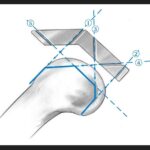When conservative treatments fail to alleviate severe back or neck pain, your doctor may recommend spinal injections as an effective solution.
Uses of Spinal Injections
Spinal injections can serve two main purposes:
- Diagnostic: To identify the source of pain in the back, legs, neck, or arms.
- Therapeutic: To provide pain relief and manage symptoms.
Typically, spinal injections are part of a broader treatment plan that includes exercise programs to enhance spinal mobility and stability.
Procedure Overview
Spinal injections are guided by X-ray (fluoroscopy) to ensure accurate medication placement:
- A contrast dye is injected to visualise the correct location.
- If necessary, the needle is adjusted until the dye flows correctly.
- The medication is injected only after achieving the correct contrast flow.
Normal Anatomy of the Spine
The spine consists of three segments forming natural curves when viewed from the side.
Types of Spinal Injections
Epidural Injection
- Purpose: Treats pain radiating from the spine to the arms or legs, often due to inflamed or compressed nerves.
- Procedure: An anesthetic and/or anti-inflammatory medication is injected near the affected nerve. Diagnostic injections help identify the pain source.
Facet Joint Injection
- Purpose: Used for diagnosing and treating pain from degenerative conditions or injury affecting the small joints between vertebrae.
- Procedure: Anesthetic and possibly steroid injections are administered directly into or around the facet joints. Radiofrequency ablation may follow to block pain signals more permanently.
Sacroiliac Joint Injection
- Purpose: Targets pain in the low back, buttocks, or legs caused by the sacroiliac joint.
- Procedure: Diagnostic injections use anesthetic to confirm pain source, while therapeutic injections may include steroids for extended relief.
Trigger Point Injection
- Purpose: Treats conditions like fibromyalgia, tension headaches, and myofascial pain syndrome.
- Procedure: Involves injecting a local anesthetic and often a steroid into problem areas, usually without X-ray guidance. Dry needling is another technique used in physical therapy.
Provocation Discography
- Purpose: Diagnoses the source of chronic back pain by reproducing symptoms through injection into the intervertebral disks.
- Procedure: Liquid is injected into the disk’s center to identify painful disks. This method is less common and is typically used when considering surgical options.
Complications and Risks
While generally safe, spinal injections carry potential risks, including:
- Bleeding
- Infection
- Nerve injury
- Arachnoiditis
- Paralysis (rare)
- Spinal headache
- Muscle weakness
- Increased pain
Steroid side effects may include facial flushing, increased appetite, menstrual irregularities, nausea, diarrhoea, and temporary increases in blood sugar.
Not Suitable For
Spinal injections may not be appropriate for individuals with:
- Skin infections at the injection site
- Bleeding disorders or anticoagulation
- Uncontrolled high blood pressure or diabetes
- Allergies to contrast, anaesthetics, or steroids





